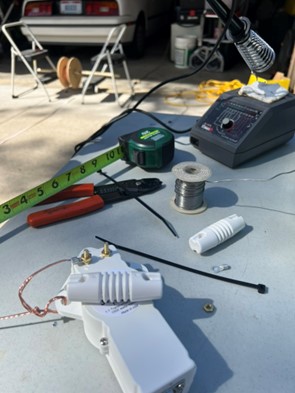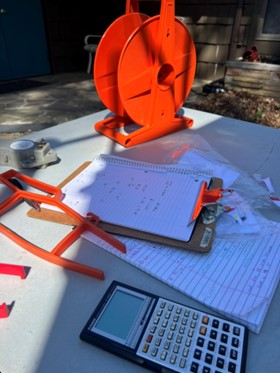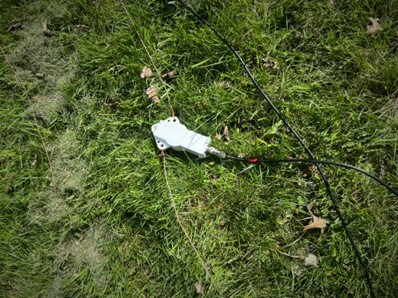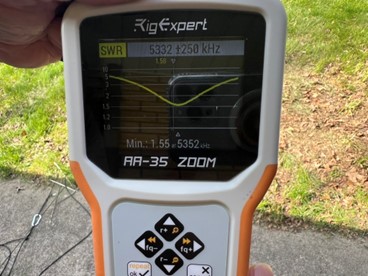Single-band wire dipoles are one of the easiest antennas to make.
But just because they are easy to make doesn’t mean they do not work well. In fact, single-band wire dipoles outperform many antennas in many circumstances.

You will need these supplies to build your dipole:
- Roll of wire
- Measuring tape(s)
- Wire cutters
- Balun
- Insulators
- Solder (optional)
- Antenna analyzer
- Cable ties
You can use many different kinds of wire. Some people have used string soaked in saltwater! However, copper or copper-clad steel wire is generally considered the best. Stranded wire is generally better since solid wire can stretch under tension.

So how long do you need the wire to be?
From the OnAllBands article, “How High Should My Dipole Be”:
“The half-wave dipole is two equal lengths of wire with the feedpoint in the center. Each wire, or element, is a quarter wavelength of the frequency you want to transmit on. The basic formula for dipole construction is dividing 468 by the desired resonant frequency, in MHz. As an example, a dipole cut for 14.225 MHz SSB is 468/14.225 = 32.9 feet total length. Divide 32.9 in half, and we see each element of this dipole needs to be 16.45 feet long.”
There are other factors to consider when determining dipole length, such as proximity of the ground and other nearby objects. Because it’s difficult to find the ideal length before actually hanging the wire, it is always best to start any wire antenna slightly longer than the calculations might indicate and then shorten the antenna, measuring its performance each time.

Now you have calculated this number. This is the length of wire you need on BOTH sides of the balun. Some of these wires are really long! How on earth do you measure and cut a wire that long?
Find a long, straight area. Roll out a heavy-duty measuring tape that will mark how long you need the wire to be. When my Elmer and I did this, we stuck a broomstick in the roll of wire and set both ends of the stick on different chairs. Next, as one held it steady, the other walked the wire out to the length of the rolled-out measuring tape.
Tie, solder, crimp, or any combination of these to each side of the balun. Short for “balanced to unbalanced,” a balun is a device used to convert a balanced signal to an unbalanced one.
For a good explanation of what that means, visit this OnAllBands article,“Baluns vs. Impedance Transformers.” Also check out this article from Moonraker, “What Is a Balun? Why You Need One and When to Use It.”
Attach your feedline to the balun. Attach insulators at the non-balun ends of the wire. This will help you hang your wire dipole without worrying if something is touching the ends of the antenna, causing your readings to be off.

Measure the SWR of the antenna. It is easiest to do this with an antenna analyzer with a graph display of SWR and frequency like those from RigExpert. If the SWR dip in the graph is at a lower frequency than the one you wanted, then your antenna is too long and you need to remove some of the wire. Clip very small amounts of wire from each side and take a lot of SWR readings. If the lowest SWR reading is at a higher frequency than your intended frequency, your wire is now too short.
Editor’s note: For more information on dipoles, read these OnAllBands articles:
Also, if you’re not inclined to collecting all the pieces and parts to build your own dipole, DX Engineering has taken care of it for you with their Single-Band Dipole Kits, which include:
- Two premium 14 AWG stranded copper, relaxed PVC antenna wires with crimped and soldered 1/4-inch ring terminal on one end of each wire
- DX Engineering DXE-MC20-1-1 MaxiCore 20 1:1 Balun
- High-Strength DXE-WA-BMB Wire Antenna Balun Mounting Bracket and End Insulators
- Stainless steel hardware
Questions? Share them in the comments below or email me at KE8FMJ@gmail.com.

